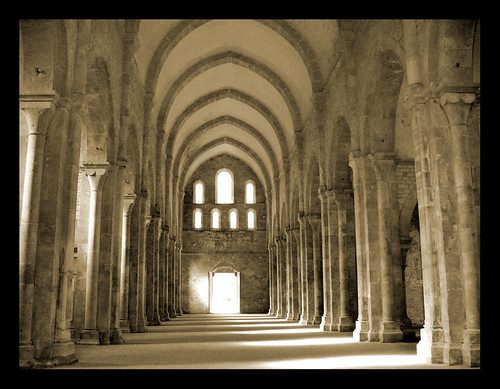The Romanesque style was initially created in 800 A.D. from Italy and Southern France. During this time Charles the Great was the reigning emperor of the Roman Empire. Some of his main focuses were the education of arts and learning of his people all while building schools and monasteries. Under his rule architecture grew astronomically, specifically because of the strong religious movements. He encourage the use of new technology when building his Roman structures. Nearly 1,600 churches were built between 1000 and 1100 A.D. The most significant style of these churches was the great abbey churches. With the influx in church structures, pilgrimages to Christian shrines were initiated. The Romanesque church design initially arose during the Early Christian era. While the basic basilica structure was still predominant, the nave, transept, and apse were simply modified in order to accommodate more people. These designs also began to incorporate semicircular arches and vaults.
Churches' lighting also improved drastically throughout the new churches. Colors like greens, blues, purples, and golds covered the interiors as well as richly decorated tapestries. Gilded statues were placed throughout churches underneath roofs constructed of masonry instead of wood. The bibles and chalices were made of gold, silver, or ivory and embellished with rubies, sapphires, pearls, and emeralds.

In 1118, St. Bernard established a monestary at Fontenay in Burgandy, France. Some of the produced goods were wool and iron. It was a center of religious and economic forces. The appearance of the structure was Austere and the walls were predominately blank with slightly painted nave arcades.
While most of the church buildings are still standing and most are still being used, residential homes are not. Churches were constructed to last because of their heavy and hardy materials wood, mud, and twigs. These floors did not provide very much warmth or light. The floors were typically made of dirt which contributed to it commonly being wet and drafty. These homes were also prone to catching on fire which many did not typically survive.
Current Applications:
Peer Reviews:
The first blog I read was Nicole's. I really like the one photo she found that shows a side by side comparison of all the major architectural components that define the Romanesque style. I really like the current example's, especially the bedroom one.
Next I read Jackson's blog and I thought it was interesting how she used her current applications as concert halls and mega churches.
Next I read Jackson's blog and I thought it was interesting how she used her current applications as concert halls and mega churches.
Additional Links!
This video examines the development and alternations that characterize Romanesque architecturla styles.
https://www.youtube.com/watch?v=rSiD5Jinpuw
No comments:
Post a Comment